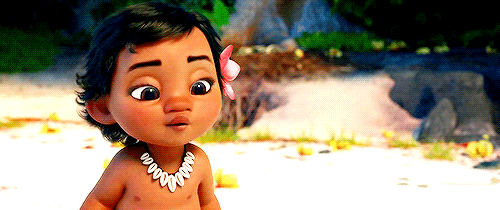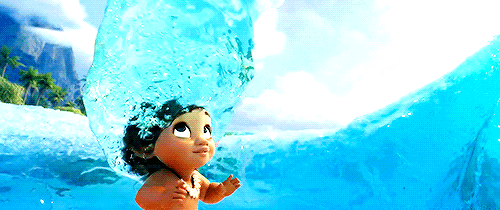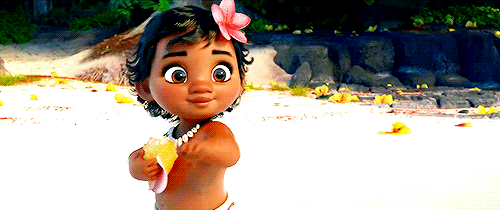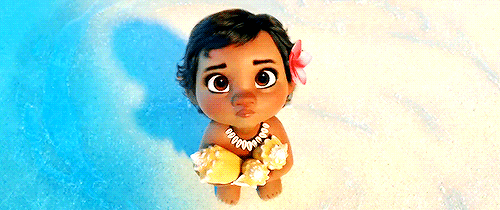Wrtiter, Business Analyst and Researcher in Digital Samoan Participatory Storytelling. This tumblr served as a workbook for my thesis on the search for the digital fāgogo, so please forgive the rough nature of my commentary. If you have any questions, contributions or points to contend, don't hesitate to submit or ask! Working portfolio can be found at http://amytielu.com
Don't wanna be here? Send us removal request.
Link
1 note
·
View note
Video
youtube
A gifted story-teller, Jody Jackson-Becerra weaves her magic using Fagogo, a traditional Pacific Island technique of story-telling. With much laughter and immagination, Jody demonstrates how you can connect with; and teach valuable life lessons to children in a format that promotes true human interaction. Jody left her large family and Samoan island life to pursue her dreams in education attaining a Masters in Management Studies (Management and Sustainability). As a community engagement manager at the Auckland University of Technology, Jody believes that education is key to empowering communities; and by engaging and motivating children through storytelling, each child has the opportunity to tell their story, however crazy it might be!
43 notes
·
View notes
Photo

Reference for later:
Check out anderson._paak for a mighty fine example of precision control Instagram storytelling, not a tile out of place.
1 note
·
View note
Link
1 note
·
View note
Photo





“Throughout my formal education from elementary up through college I never heard tale of African deities. A little over a month ago I began to research online to find information in regards to the gods & goddesses of Africa. To my surprise there were many, however the ones that stood out the most were the deities of Nigeria and Benin, West Africa which they referred to as Orishas.
I wanted to portray the regal beauty of each Orisha while also representing their majestic sensuality. Each iconic depiction was rendered to lend strength to our resilience as a great race of people and to show our youth that they are beautiful, bold and brilliant just they way God created them to be. […] each Orisha’s name is written in the Yoruba dialect and captures imagery of powerful men, women & children of various complexions who are all of African descent.” - by artist James C. Lewis
#absolutely stunning#african deities#indigenous heritage#gods and goddesses#africa#creative photography#photography#james c lewis
933 notes
·
View notes
Photo

#TB to that time I had no idea what I was doing but stepped in front of a crowd and figured it out anyway. "(Malietoa) Malietau" (http://ajtielu.wixsite.com/malietau) ended up being an important seed of my current thesis. You don't always have to know where you're going when you start. Just get started. #SOML #CoffeeCrew #SeriousPlay #MCT2015 #AUTUNI #Colab #SamoanStorytelling PC: @xstacy_brettx
0 notes
Link
“As controversial as it was, the reason we decided to launch off the back of a social experiment was because we wanted to explore the very real themes that we're looking at in our project which includes what it is to be a woman, to be brown, to be young, to be a mother in New Zealand today. We really wanted to challenge and expose some of the judgement and the misconceptions we feel exist around these issues.”
Finally, the age of Polynesian transmedia is here. A month before I’m due to submit my thesis. I do not have time for you new case studies, whyyyyy???
#baby mama's club#sophia folau#finding johnny#transmedia#pacific storytelling#pasifika storytelling#context review
24 notes
·
View notes
Link
This paper reports on a pilot project that sees an international collective of researchers, led by Unitec’s Malama Saifoloi, collaborate with west Auckland community group the Pacifica Mamas, to trial Participatory Video practices with the group. An emerging trend in Pacific research and community action, the report documents the development and implementation of a methodological framework for Participatory Video that suits its Pacific diasporic context.
#yaaaaaaaaaassss#participatory video and the pacific mamas#participatory video#pasifika storytelling#pasifika#storytelling#pacific storytelling#context review
0 notes
Photo

PACIFIC LIT PT. 1
Island of Shattered Dreams by Chantal T. Spitz
Finally in English, Island of Shattered Dreams is the first ever novel by an indigenous Tahitian writer. In a lyrical and immensely moving style, this book combines a family saga and a doomed love story, set against the background of French Polynesia in the period leading up to the first nuclear tests. The text is highly critical of the French government and, as a result, its publication in Tahiti was polarizing.
Tales of the Tikongs by Epeli Hau'ofa
Tiko, a tiny island in the Pacific Ocean, faces a tidal wave of D-E-V-E-L-O-P-M-E-N-T, which threatens to demolish ancestral ways and the human spirit. From Sione, who prefers to play cards with his secretary during work hours, to Ole Pasifikiwei, who masters the twists and turns of international funding games, all of the characters in these pages are seasoned surfers, capable of riding the biggest wave to shore. These are not stories of fatal impact so much as upbeat tales of indigenous responses to cultural and economic imperialism. Epeli Hauofa uses devices derived from oral storytelling to create a South Pacific voice that is lucid, hilarious, and compassionate in a work that has long been regarded as a milestone in Pacific literature.
Where We Once Belonged by Sia Figiel
A bestseller in New Zealand and winner of the prestigious Commonwealth Prize, Sia Figiel’s debut marks the first time a novel by a Samoan woman has been published in the United States. Figiel uses the traditional Samoan storytelling form of su'ifefiloi to talk back to Western anthropological studies on Samoan women and culture. Told in a series of linked episodes, this powerful and highly original narrative follows thirteen-year-old Alofa Filiga as she navigates the mores and restrictions of her village and comes to terms with her own search for identity.
My Urohs by Emelihter Kihleng
The first collection of poetry by a Pohnpeian poet, Emelihter Kihleng’s My Urohs is described by distinguished Samoan writer and artist Albert Wendt as “refreshingly innovative and compelling, a new way of seeing ourselves in our islands, an important and influential addition to our [Pacific] literature.”
91 notes
·
View notes
Photo




Baby Moana (✿◠‿◠)
74K notes
·
View notes
Text
As a Pasifika centered blog, heavily focused on media, we know that this is an exciting time for Pasifika folk since there are many mainstream/Hollywood projects featuring Pacific Islanders that are going on right now and in the near future (Moana, Justice League/Aquaman) and that’s really cool.
We also know that there are serious conversations to be had about representation and whether or not these things are helpful or harmful. The only thing that we would advise is to be mindful of each other. That means being open minded and understanding that other Pasifika folk will disagree and have differing opinions. You don’t have to explain yourselves to non-PIs, your viewpoint is valid. However, we firmly believe that having discussions and fully realized conversations amongst ourselves is necessary, and not just as a unit! No, but so that you yourself can analyze your own personal thoughts, and recognize why you feel the way you feel vs. someone else.
Not everyone will be happy about everything, and not everyone will be upset about things that you might think they should be upset about, and that’s fine. In the end, this new light being cast on Pasifika people in media will only push us to create and support more content specifically made by other Pasifika people. We have a wealth of stories, we should be telling them ourselves. Let’s not let other people dictate how we should feel about our own histories.
54 notes
·
View notes
Photo




These 2 Pasifika girls were chosen for Voices of Future Generations Child Authors where children from 8-14 years old, in different regions of the world, are selected by the International Commission to give a unique perspective into how children from across the Earth perceive the challenges that they will face in the future, and the solutions that they believe are possible.
The Voice of an Island by Lupeo'aunu'u Vaai (12) Lupe, or Lupeoaunu’u Vaai, is from Vaoala in Samoa. She is a pupil of St Mary’s Primary School Savalalo. Her favourite subjects include Maths, English, Social Studies and Basic Science, and she loves studying about the environment and experimenting with technical gadgets to see how they work. She considers herself the family ‘enironmental and technical expert’. Lupe also enjoys reading, socialising with her friends, playing the piano, playing sports as well as Samoan and hip hop dancing. She lives with her parents and her two brothers. One of her biggest idols is Ms Brianna Fruean, who is a young environmentalist in Samoa who recently received a Commonwealth Award from the Queen in London for her work as a Young Environment Advocate. Lupe is a Catholic and she goes to church at the Immaculate Conception Cathedral, Apia. She is working to set up her own environmental group in her school in order to help support the environment in her developing country. When Lupe was 7 years old, she won her first national inter-school competition and her drawing on saving energy was produced as a sticker for promotion by the Ministry of Natural Resources & Environment. Lupe wants to continue learning so she can be either an environmental lawyer or an Information Technology expert in the future. She is especially grateful to her parents, her family, her helpers and her teachers and friends for their support.
The Visible Girls by Tyronah Sioni (10) Tyronah Sioni is originally from Papua New Guinea. She lives in Singapore with their father and her three brothers. She is a pupil of the Australian International School. Everyone calls her Tyra, she is in the 4th grade and the President of her class. She likes singing and dancing but most of all, she loves helping the planet. She hopes one day to create a worldwide charity called Evergreen. Her charity will help people in need, especially those who can’t a ord food and homes. It will also help to decrease pollution and solve environmental problems, teaching us not to take too much of something, such as over shing. She also dreams of working to investigate and ght corruption, discrimination, and harassment. She plans to try her hardest and her best to make this simple dream an amazing reality.
You can view Lupe and Tyra’s books, as well as the other amazing children authors books here in pdf format (note: these are not the full copies of the books, simply press mockups, so only the text is available with a few included illustrations. We’ll update this post if/when we get purchasing information)
#so proud of these girls#Lupeo'aunu'u Vaai#Tyronah Sioni#pacific#pacific islands#papua new guinea#samoa#storytelling#indigenous storytelling#pacific storytelling#the visible girls#the voice of an island
646 notes
·
View notes
Photo




Mana Comics presents Island Warriors at the Celebrate Micronesia Festival (3/19/16)
#YAAAAAAAAAAAAAAAAAAAASSSSS#but can I get a bit more science in their powers please#POWERS OF THE COSMOS#please qualify#mana comics#celebrate micronesia#micronesia
193 notes
·
View notes
Photo
The real question is what process this Kristina Bad-Hand undertook: if she collaborated with Polynesians to work with her on this project.
There’s a significant difference in appropriation vs consultation vs collaboration -- the latter is where the community featured in the work have also been a significant if not equal partner in the production process. You can see this in “flagship” examples such as Never Alone:
“Cook Inlet Tribal Council (CITC), a leading provider of social, educational and employment services to Alaska Native people residing in the region, had three goals: to create new sources of revenue through its for-profit subsidiary, CITC Enterprises, Inc. (CEI) that could allow CITC to increase the level of opportunities offered to Alaska Native people; help strengthen the connection between Native youth and their cultural heritage; and to celebrate and share Alaska Native cultures with new audiences around the world” (Alspach, 2014).

In light of Native Realities’ mission to provide a platform to “First Nations freedom fighters, Aboriginal astronauts, and Native American superheroes whose stories have long been coopted, unheard or ignored“ (x), I would be surprised for them to support a work which didn’t address these concerns in its creative process. However, the fact that "Kaui: A Tale of Polynesian Beauty and the Beast” is no longer available on the Native Realities website could be a red flag.
Another red flag: “Polynesian”. Which of my ‘Nesians from my Poly family will you be telling us about today? We’re all about #OneLove but we’re not #OnePeople.
Further, “Beauty and the Beast”. If you know Samoan traditional stories (for a start), you’ll understand that’s basically every other story hahaha!
If Kristina is still online and should find this message, please you are most welcome to inform us about your creative process and let us know what else you’re working on. Alofa atu ma fa’amanuiaga mo lau galuega.
references
Alspach, B. (2014, October 7). NeverAlone-EXTERNALPressQAv4Oct7_2014.docx. Retrieved June 26, 2015, from https://www.dropbox.com/sh/hzborcatib0xg1y/AADUWwzELp78Ez-VtcAOvbAra/Background/NeverAlone-EXTERNALPressQAv4Oct7_2014.docx?dl=0



Kaui #1 (2015) // Native Realities and INC Comics
“A Polynesian Tale of Beauty and the Beast
When a young woman is washed out to sea, she wakes to find herself on a mysterious island filled with magic, dangers, and secrets. As she remembers the stories she was taught as a child, a new story unfolds around her, one that has dangerous consequences for those who don’t listen and those who don’t care. “
Story: Kristina Bad Hand , art: Kristina Bad Hand
Get it now here
[ Follow SuperheroesInColor on facebook / instagram / twitter / tumblr ]
#kaui a tale of polynesian beauty and the beast#native realities#polynesia#polynesian#stories#pasifika#pacific islands#indigenous storytelling
1K notes
·
View notes
Video
If you haven’t checked out theCoconet.TV’s other videos, I highly rec you do! They have more than just the legends, cross-culture from all of the Pacific Islands, a lot of them are in this style and they’re pretty hilarious.
I’m with you -- I’ve heard the version where Malietoa’s son died and was cooked, then presented to his father. It’s possible this animation changed the details, or was inspired by another version. :)
Disclaimer: I am not an academic who can comment on the historical practices of cannibalism within Samoa or the rest of Polynesia, so it’s possible that cannibalism was not limited to chiefs (tulafale / orators, ali’i / high chiefs, or paramount chiefs). The comment in the video about it being like planking, “you had to be cool to do it”, could have been off-the-cuff, or a reference to its exclusive practice. I’m trying to get in contact with Mario Faumui to ask him more about it.
Update: According to Mario, it was a playful remark rather than any undercover reference to historical practice. Thanks, Mario!
youtube
‘Know your roots’ takes a funky fresh twist on a classic legend to bring you a different way of telling Pacific stories.
This legend is about how cannibalism ended in the islands of Samoa. Long ago when King Malietoa ruled the Islands of Samoa, families had to sacrifice their loved ones for the King’s feast. But one warrior took a stand against the king and stood up for his people.
Eating people is… bad
A nice general principle we could extend to all problematic behaviours or protocols: if you can’t imagine asking the most precious people in your life to submit to it, just don’t do it.
This is a completely different take on how animation is employed to tell a fagogo. Self-aware, straddling the fourth wall to engage the audience in a conversant reflection on themselves, it specifically calls out the group who respond to self-identification with or knowledge of fellow Samoans who are potentially overweight (”We know we Islanders love our food, I mean look at you. Yes, look at you!”) or physically discipline their children. The narrator invites the audience to then look from themselves over the wall and understand events of the fagogo in oversimplified terms (”cannibalism was the thing at the time – like planking – you had to be cool to do it”; a practice of power dynamics separating the titled from the low or less-connected), with familiar animation styles, graphical icons and contemporary pop culture lingo for Aotearoa (”nek minnit”).
Comedy and fun are the keys here in a vibrant, vivid palette of fast-paced colour where the tale is explained as one might explain it to a Samoan youth with no previous awareness of their cultural heritage. It uses the visual and spoken language of contemporary urban Aotearoa; like a primer to break the ice as an introduction to more serious texts as the alternative artefacts shown in this context review.
5 notes
·
View notes
Video
Can’t wait to see this at it’s closing show this Saturday.
Tickets are still available if you’re keen on seeing how a Pan-Pacific production mashes with Macbeth. I want to see more shows like this, more from our Pacific creatives, just more, more more! <3


youtube
SOMETHING WICKED THIS WAY COMES
The Black Friars present MACBETH, set in precolonial Polynesia. Amazing cast. BOMB music! The show is up in Auckland, NZ so please please come along if you can! Share, bring along your mates and support pasifika theatre and arts. I promise you won’t want to miss this one
Tickets available here
http://www.eventfinda.co.nz/2016/macbeth/auckland/mangere
#macbeth#mangere arts centre#pacific#pasifika#theatre#shakespeare#polynesia#performing arts#south auckland
210 notes
·
View notes
Note
Appreciate the referral, thank you!
Hope to see more of our Pasifika digital artists showing what they can do on forums like this soon. Alofa atu!
Hey girl, I adore your work! Keep it up and I hope you're able to share with us for a long time to come! Can you recommend any other Pasifika or Polynesian digital artists online whom you follow, and where to find their work? Tai lava. :)
Tai lava! I appreciate the love. I actually don’t know any other digital artists except for Onesian? He’s on Instagram, Facebook, and here on Tumblr!
4 notes
·
View notes